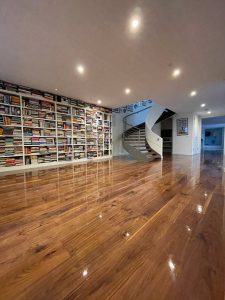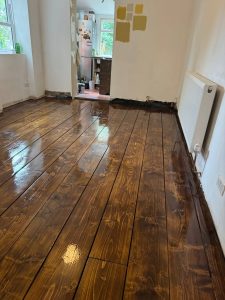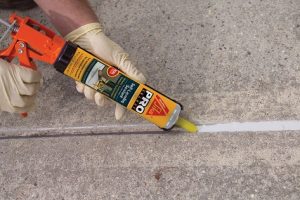
Sanded floors can dramatically enhance the aesthetic appeal and value of your home. To ensure they remain in pristine condition for years to come, proper care and maintenance are essential. Here’s a comprehensive guide for London homeowners on how to extend the life of your sanded floors.
- Regular Cleaning
Daily Sweeping and Vacuuming:
- Dust and Debris: Regularly sweep or vacuum your floors to remove dust, dirt, and debris that can scratch and wear down the finish.
- Soft Bristles: Use a vacuum with a soft bristle attachment or a microfiber mop to avoid damaging the surface.
Damp Mopping:
- pH-Neutral Cleaners: Clean your floors weekly with a damp mop and a pH-neutral cleaner. Avoid excessive water, which can cause wood to swell and warp.
- Avoid Harsh Chemicals: Steer clear of abrasive cleaners or those containing ammonia, as they can strip the finish and damage the wood.
- Protective Measures
Use Mats and Rugs:
- Entryways: Place mats at all entry points to trap dirt and moisture. Rugs in high-traffic areas like hallways and living rooms can reduce wear and tear.
- Under Furniture: Use rugs or mats under heavy furniture to distribute weight and prevent dents.
Furniture Pads:
- Prevent Scratches: Attach felt pads to the legs of chairs, tables, and other furniture to prevent scratches and gouges when moving them.
Pet Care:
- Trimmed Nails: Keep your pets’ nails trimmed to minimize scratching.
- Designated Areas: Consider creating designated pet areas with rugs or mats to protect the flooring.
- Climate Control

Maintain Humidity Levels:
- Optimal Humidity: Keep indoor humidity levels between 35% and 55% to prevent the wood from expanding and contracting. Use a humidifier in winter and a dehumidifier in summer if necessary.
- Temperature Control: Avoid extreme temperature fluctuations, as they can cause the wood to crack or warp.
- Preventative Maintenance
Immediate Spill Cleanup:
- Wipe Up Spills: Promptly clean up spills to prevent stains and water damage. Use a soft cloth to blot the spill and avoid rubbing it in.
Regular Inspections:
- Check for Damage: Periodically inspect your floors for signs of damage, such as scratches, dents, or water stains. Address any issues promptly to prevent them from worsening.
Reapply Finish:
- Recoating: Depending on the type of finish, you may need to reapply it every few years. This provides an additional protective layer and refreshes the floor’s appearance.
- Light Sanding: Before recoating, lightly sand the surface to ensure the new finish adheres properly.
- Professional Maintenance

Scheduled Professional Cleaning:
- Deep Cleaning: Hire professionals for deep cleaning and maintenance at least once a year. They have the expertise and equipment to thoroughly clean and restore your floors.
Expert Repairs:
- Damage Control: For significant damage, such as deep scratches, gouges, or water damage, consult a professional. They can perform repairs that maintain the integrity and appearance of your floors.
- Avoiding Common Pitfalls
High Heels and Sharp Objects:
- Footwear: Avoid walking on hardwood floors with high heels or shoes with sharp objects that can dent or scratch the wood.
- Protection: Use protective mats in areas where sharp objects are used, like the kitchen, to prevent damage from dropped utensils.
Sunlight Exposure:
- UV Protection: Prolonged exposure to sunlight can fade and discolor your floors. Use curtains, blinds, or UV-resistant window films to protect your floors from direct sunlight.
- Rotate Rugs: Periodically move rugs and furniture to prevent uneven fading.
Conclusion
Maintaining the beauty and longevity of your sanded floors requires regular cleaning, protective measures, climate control, and proactive maintenance. By following these tips, London homeowners can ensure their floors remain in excellent condition for many years, adding enduring value and charm to their homes.
Investing time in proper care and maintenance not only preserves the aesthetic appeal of your floors but also extends their lifespan, making it a worthwhile effort. Whether you choose to handle maintenance yourself or hire professionals, these strategies will help you enjoy the timeless beauty and durability of your sanded floors.








The Difference Between Floor Sanding and Refinishing
The Difference Between Floor Sanding and Refinishing Understanding the Best Options for Your London[Read more...]
How to Deal with Floor Squeaks: Sanding and Repair Tips
How to Deal with Floor Squeaks: Sanding and Repair Tips Ensure Quiet and Smooth[Read more...]
Choosing the Right Floor Sanding Service in London
When it comes to revitalising your wooden floors, selecting the right floor sanding service is[Read more...]
Floor sanding and renovation and installation services in Croydon
Croydon: A Dynamic and Diverse London Borough Croydon is a bustling and diverse borough located[Read more...]
How to Incorporate Floor Sanding into Your Home Renovation
How to Incorporate Floor Sanding into Your Home Renovation Transform your London home with[Read more...]
How to Handle Mold and Mildew Before Sanding
How to Handle Mold and Mildew Before Sanding Before sanding your floors, it is[Read more...]
Floor Finishes
Making a start on your wooden floor finish. Timber floors require a protective coating to[Read more...]
Wood Floor Reclaiming – Floorboard Replacement
[Read more...]
How to Choose a Floor Sanding Contractor: Key Questions to Ask
How to Choose a Floor Sanding Contractor: Key Questions to Ask Ensure You Hire[Read more...]
The Best Rugs and Mats for Protecting Sanded Floors
The Best Rugs and Mats for Protecting Sanded Floors Maintain your wooden floors with[Read more...]